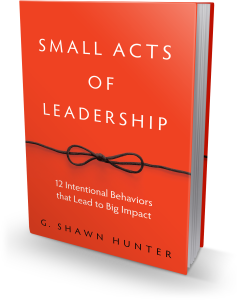A More Powerful Way to Build Habits
I’m trying to play more guitar. So I took the guitar out of the closet, tuned it up, and keep it by my desk, within reach. It works. I play more. It’s a small, simple habit stack that helps me achieve a small goal. But what about longer term goals, bigger goals – the kind which require persistent effort, and the outcome is unclear and far away? Like saving monthly for retirement, or eating kale?
Previously I wrote about the notion of activation energy – which is basically the idea that if you make something bad for you harder to do, you will be less likely to do it. And inversely if you make something good for you easier to do, you will be more likely to do it.
So, for example, if you want to go running tomorrow you place your running gear next to your bed so it’s the first thing you see in the morning and it’s easily accessible to put on. Or if you want to stop eating ice cream, you simply stop buying it, so in order to eat ice cream at 9pm it would require you put on go-in-public clothes and drive to the corner store and buy it. You might, but it would be a hassle.
The ability to delay gratification, and value the future more than the present, seems to be the holy grail for better health, better relationships, and better careers. But the prevailing themes we keep hearing in the media are about grit, tenacity, and perseverance. And often the advice to be grittier comes across as the importance of being more robotic, more cerebral, and more disciplined.
This is an argument in which we try to remove temptation, remove emotion, and take away the stress of dealing with temptation and bad choices, and create better habits simply by applying some self-discipline, and some cool tricks and life hacks. James Clear has lots of habit tricks that I greatly enjoy and apply.
David DeSteno, professor of Psychology at Northeastern University, has different ideas. His research suggests that the disciplined habit-tweaking approach described above is basically a form of impulse control. If our impulse is to do something that has long term negative consequences, then we need only change the environment and circumstance, and be a little mentally tougher, to help control that impulse.
DeSteno argues that exercising self-control as a rational, logical approach to solving an emotional self-control dilemma is another way of suppressing our immediate desires. It’s not really human, and it’s not our instinct. DeSteno suggests that we may get more powerful results not by rejecting, controlling or diminishing our emotions, but instead by activating the right kinds of emotions and leaning in to those, and using emotion as fuel instead of denying it.
Let me explain. We do have self-control, but our self-control did not evolve to maximize our 401k. Self-control evolved to make us better collaborators with other people. Because if you are viewed as sharing and compassionate and generous, then you are trustworthy and others will work with you, help you and share with you. And when you can figure out how to be a trustworthy collaborator, you are more likely to be part of a tribe and survive longer when the hyenas come around.
The kind of self-control to avoid buying a new car in order to maximize our 401k is an intellectual, rational kind of control. It’s not always easy to simply will ourselves to not eat the ice cream, or not have another drink, or to go to the gym after work. This is because we naturally devalue the impact of our short-term choices and we have a hard time imagining the long-term impact on our future selves. Basically we have a hard time envisioning our future selves because we think we won’t change.
Yes, we recognize that in the past we did change. Look at those photos of young me. I was so silly and naive. But now that we’ve evolved into who we are today, we think we’re all done changing.
It’s easy to look back on our past selves with a kind of bemused, slightly embarrassed recollection, because we can see how far we’ve come, how much we’ve learned and developed. But at the same time we are terrible at imagining our future selves. We think who we are today is who we will be in the future. Wrong. We are always changing.
Human beings are works in progress that mistakenly think they’re finished. The person you are right now is as transient, as fleeting and as temporary as all the people you have ever been.
– Dan Gilbert
The key to envisioning a positive and healthy future version of you is to tap into those emotions which activate future thinking. Gratitude is a powerful emotion for envisioning a positive future self. We often think of gratitude as a reflective emotion, as in “I’m so grateful Sally and Barbara helped me through my difficult break-up with Marcus.” But gratitude is a powerful emotion for guiding our future actions. If we’re so grateful for Sally and Barbara, we are likely to envision ways to reciprocate. We’re likely to imagine who we will be in the future when we are helping Sally and Barbara because of our sense of deep gratitude.
The emotion of gratitude relies on our connection to others. The emotion exists to ensure that we reciprocate and continue building our relationships. If Sally and Barbara help us out, and we never reciprocate because we don’t care or we don’t understand empathy, then the relationship dies.
DeSteno argues that the right kinds of emotions to drive the choices and habits that create a better version of ourselves are the morally-toned emotions of gratitude, compassion and authentic pride of a job well done. Morally-toned emotions are the kinds of emotions that make us feel connected with one another, and help us envision a shared future together, and therefore help us value longer term benefits.
In DeSteno’s research they asked participants to place values on immediate versus future rewards, and found that on-average, people valued $17 right now as roughly equal to receiving $100 in a year. In other words, almost everyone would rather have a little bit now instead of a lot more later.
Then they primed their research participants to think of something they are grateful for, and found that participants began to almost double the value of future benefits. After priming for gratitude, it would take nearly $33 right now in order to have the same value as $100 in a year. Gratitude and compassion seem to have the capacity to encourage people to place a higher value on their future selves, and thus encourage people to make better long term decisions.
But don’t get lost in focusing on just future benefits. Gratitude and compassion have been demonstrated to reduce blood pressure, increase immune responses, allow people to sleep better and a whole host of other immediate mental and physical benefits.
- ____________________________________________________

Last summer, my son and I bicycled across America with two other dads and their teenagers. We published a new book about it called Chasing Dawn. I co-authored the book with my cycling companion, the artist, photographer, and wonderful human jon holloway. Buy a copy. I’ll sign it and send it to your doorstep.



